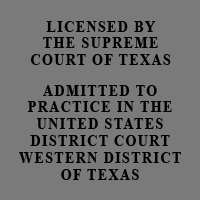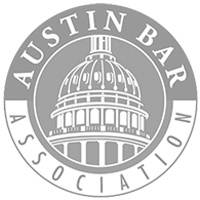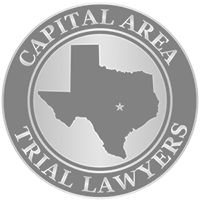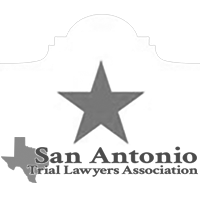Texas Defective Seat Belt Lawyer Handles Texas Single Vehicle Accident Lawsuits, Texas Deadly Defective Seatbelt Lawsuits, Texas Defective Restraint Design Lawsuits, and Fatal One Automobile Crash Lawsuits by Texas Defective Seat Belt Lawyer Jason S. Coomer
Defective seatbelts and/or defective airbags in automobiles can turn a simple automobile accident into a fatal automobile collision, deadly car wreck, or catastrophic injury crash. In designing automobiles, manufacturers know that it is important to design vehicles with safety features that protect occupants. Failure to design safe vehicles that are crashworthy, can result in a crashworthiness product liability lawsuit.
If you have lost a loved one in a fatal defective seatbelt automobile crash, failed seatbelt restraint collision, or other serious vehicle accident , feel free to submit an inquiry or send an e-mail to Texas Defective Seatbelt Accident lawyer Jason Coomer.
Automobile Accident Defective Safety Belt Lawsuits, Automobile Seatbelt Failure Crash Lawsuits, Automobile Wreck Defective Shoulder Belt Lawsuits and Fatal Automobile Collision Defective Safety Restraint Device Lawsuits (Texas Defective Seatbelt and Safety Restraint Device Lawyer)
Defective Safety Belts, Shoulder Belts, and other restraining safety devices in an automobile can cause catastrophic injuries or even death to a driver or passengers during an automobile crash.
Because seatbelts have a variety of moving parts, it is important to understand how the moving parts work and if each of the parts are working correctly when investigating a defective seat belt fatal accident or defective seatbelt catastrophic injury car crash. This investigation should look at the overall design of the restraint devices in the vehicle and compare it to the injuries sustained by the driver and passengers as well as determine if any individual part of each safety belt, should belt, child safety seat, airbag, and other safety devices were working properly.
Typically, defective seatbelt lawsuits and defective safety restraint device lawsuits can be broken down into many categories of defects.
Automobile Accident Defective Safety Belt Latch Lawsuits, Automobile Seatbelt Latch Failure Crash Lawsuits, Automobile Wreck Defective Shoulder Belt Latch Lawsuits and Fatal Automobile Collision Defective Safety Restraint Latch Device Lawsuits (Texas Defective Seatbelt Latch and Safety Restraint Latch Device Lawyer)
One such category of defective safety belt and defective seatbelt lawsuits are defective seat belt latch lawsuits, defective shoulder strap latch lawsuits, and defective safety restraint latch lawsuits. In investigating a defective seatbelt latch lawsuit, the defective seatbelt latch lawyer should remember that a seatbelt latch should never unlatch inadvertently. The only time it should unlatch is when the user chooses to unlatch it by pushing whatever apparatus is required to disengage the latch.
Sometimes a buckle will disengage on its own. Sometimes a latch plate will never securely lock into the buckle and will pull out with little or no effort. These are just two examples of some of the more common latch defects. Inertial unlatching, inadvertent unlatching and false latching are the most commonly encountered latch defects. Inertial unlatching is a situation in which a latch plate will release out of the buckle during a collision. This is commonly a result of an external force applied to certain components of the seatbelt. Allegations of inertial unlatching have been around since the 1970s and were dismissed by car manufacturers. Subsequently, evidence of inertial unlatching has made it a real issue and a viable defect claim. This defect has been identified in seatbelt systems in which the buckle is housed in a rigid stock secured to the vehicle’s frame. With force to the bottom of the stock, the latchplate can be released from the buckle. That is not the only way inertial unlatching can occur. Investigate the possibility of inertial unlatching when considering a failed seatbelt case.
Inadvertent unlatching can be caused by flying debris or flailing limbs contacting the buckle release button during a rollover or other collision. When a foreseeable accident occurs, there is often flying debris throughout the vehicle, and occupants’ limbs are prone to flailing. These scenarios are foreseeable in a collision and seatbelt buckles are intended to stay latched even in the presence of flying debris contacting the buckle release button. Some buckles are better than others at withstanding contact from flying debris. Chrysler’s Generation 3 seatbelt buckles that were installed in many Chrysler products from 1993-2003 were especially susceptible to inadvertent unlatching. If there is a basis for believing that your occupant was belted before the accident but during the accident scenario became unbuckled, investigate the possibility of inadvertent unlatching. False-latching occurs when the latch plate looks, feels and sounds like it is secured in the buckle but is not securely locked in place. Chrysler’s Generation 3 seatbelt buckles that were installed in many Chrysler products from 1993-2003 were especially susceptible to false-latching due to the spacing and structure of their buckles. These buckles were laid out in a way that a user could fully insert the latch plate into the buckle but miss the entire locking mechanism and therefore, never secure the buckle.
A post collision analysis of the buckle can often indicate if false-latching is a concern. When a seatbelt latch fails it is possible the police report will state, and may be corroborated by first responders and witnesses, that the occupant was not wearing a seatbelt. As discussed above, latches can fail and occupants can appear no longer belted after an accident. Thoroughly analyze the seatbelts and interview all witnesses to see if there is any evidence of usage and/or the possibility of the seatbelt failing. Do not dismiss a case for lack of seatbelt use without investigating the seatbelt issues discussed above.
Automobile Accident Defective Safety Belt Spooling Lawsuits, Automobile Seatbelt Spooling Failure Crash Lawsuits, Automobile Wreck Defective Shoulder Belt Spooling Lawsuits and Fatal Automobile Collision Defective Safety Restraint Spooling Device Lawsuits (Texas Defective Spooling Seatbelt and Safety Restraint Device Lawyer)
Another category of defective safety belt and defective seatbelt lawsuits are defective seatbelt spooling lawsuits, defective shoulder strap spooling lawsuits, and defective safety restraint spooling lawsuits. In investigating a defective seatbelt spooling lawsuit, the defective seatbelt spooling lawyer should remember that a seatbelt retractor device should keep the driver and passengers in a vehicle properly restrained during a collision. The seatbelt retractor should lock the seatbelt and hold the driver and passengers in place preventing them from hitting the windshield or other parts of the inside of the vehicle that could cause serious injury or death. In order words a proper functioning retractor should not release excess slack during a collision allowing the occupants to move and potentially suffer serious or fatal injuries.
Seatbelt and safety belt spooling occurs when an excess amount of webbing is introduced into a seatbelt during a collision or rollover event because of a defect in the retractor device. When a defective retractor fails to properly lock, excessive seatbelt webbing can be released out of the defective retractor and results in excess seatbelt webbing or slack in the seatbelt that can prevent the driver or passengers from being safely held in place causing a catastrophic or fatal injury in what should have been an injury free collision.
Seatbelt spooling can happen for many reasons. Regardless of the reason, the seatbelt should not spool-out and fail to keep a driver or passenger properly restrained during a collision or rollover event. If in post-collision the post accident investigation, the seatbelt is found with excess slack in the belt, it is important to carefully consider and analyze the possibility of a spooling defect. Also, if a driver or passenger hit the windshield or appears to have moved a lot when they should have been properly restrained, it is important to consider the possibility of spooling and a defective seatbelt retractor device.
Through pictures or post-collision vehicle inspections, the presence of too much webbing in the belt can often be identified. The defective retractor device often cannot be identified by a cursory examination of the vehicle wreckage, but typically is only identified by experienced defective seatbelt spooling lawyers and the use of defective seatbelt spooling experts. Even if it can be determined that spooling happened, it often takes an experienced defective seatbelt lawyer or expert to determine the cause of the defective seatbelt retractor. Sometimes a seatbelt will spool-out simply as a result of the retractor failing to lock up during a collision. Please keep in mind that retractors are designed to be triggered by certain events. They are created to lock up when there is force applied in one direction or another. For example, a retractor obviously should lock with the force of a high-speed front-end collision. In the front-end collision, a secure shoulder belt should restrain the driver and passengers in the seats and prevent injurious contacts with the steering wheel and windshield. In front-end collision cases, defective spooling causing a slack or loosely fitting shoulder belt could fail to hold a driver or passenger in their seat and allow them to be thrown into the steering wheel, windshield, or other parts of the interior of a vehicle.
A defective retractor can also fail to lock during a rollover collision, allowing to excess webbing to be introduced into the seatbelts and allowing drivers and passengers to be thrown free during the rollover. Traditional seatbelt systems have been typically ill-equipped to account for the vehicle dynamics of a rollover. In a rollover, however, seatbelts are critical in limiting occupant excursion. Occupant excursion is the extent to which the driver's and passenger's bodies move out of their original seating position during a collision event. Typically, the greater the excursion, the greater the chance of injury. Many retractors, by design, let out excess slack during a rollover because the mechanism for locking the retractor is ineffective while the vehicle is rolling. Instead of staying locked through the entirety of a rollover event, some seatbelt retractors will lock and unlock as the vertical and horizontal forces on the vehicle change. Retractors should stay locked during the entirety of a collision.
A retractor staying locked throughout a rollover is essential to limiting occupant excursion. When investigating and pleading a design defect seatbelt case, always be current on what safer alternative designs were available when the vehicle was manufactured. There are multiple safer alternative designs on the market that can alleviate spooling. Some automobile manufacturers incorporate more than one retractor into their seatbelt systems in case one fails. Rollover fired seatbelt pretensioners were developed in the past ten years to address many of the retractor issues related to rollovers. They are activated when a rollover is sensed and automatically pull in and lock the seatbelt. Seat integrated, or All-Belts to Seats, systems are systems where the seatbelt housing is located in the seat and not the B-Pillar. Also, Web-Grabbers help alleviate the chances of spooling. All of these are safer alternative designs that help to significantly reduce occupant excursion in a collision event. When investigating a design defect seatbelt case, determine what safer alternative designs were economically and technologically feasible at the time the vehicle was manufactured.
Retractors can fail to lock because of a variety of defects including design defects and manufacturing defects.
Automobile Accident Defective Safety Belt Webbing Lawsuits, Automobile Seatbelt Webbing Failure Crash Lawsuits, Automobile Wreck Defective Shoulder Belt Webbing Lawsuits and Fatal Automobile Collision Defective Safety Restraint Webbing Device Lawsuits (Texas Defective Webbing Seatbelt and Safety Restraint Device Lawyer)
Another category of defective safety belt and defective seatbelt lawsuits are defective seatbelt webbing lawsuits, defective shoulder strap webbing lawsuits, and defective webbing manufacturing lawsuits. In investigating a defective seatbelt webbing lawsuit, the defective seatbelt webbing lawyer should remember that seatbelt webbing should not break or come apart in most vehicle collisions. Seatbelt webbing that has broken has probably been cut or was the result of a seatbelt manufacturing defect. In order words seatbelt webbing should not rip or tear apart during a collision allowing the occupants to move and potentially suffer serious or fatal injuries.
The presence of ripped or torn safety belt webbing should raise a red flag that there may be a defect or manufacturing flaw in the safety belt webbing. When the seatbelt tears or is ripped in half during an accident, something has probably gone terribly wrong. Seat belt webbing is designed to withstand the forces of most survivable collisions without ripping or tearing. Torn or ripped seatbelt webbing might occur because of a defect or manufacturing flaw in the webbing itself, such as material or weaving deficiencies.
Ripped or torn webbing might also be the consequence of some other type of automobile defect including defective spooling, defective detractor, or defective safety design.
Automobile Accident Defective Safety Restraint Design Lawsuits, Automobile Seatbelt Design Crash Lawsuits, Automobile Wreck Defective Shoulder Belt Design Lawsuits and Fatal Automobile Collision Defective Safety Restraint Design Lawsuits (Texas Defective Seatbelt and Safety Restraint Device Design Lawyer)
Another category of defective safety belt and defective seatbelt lawsuits are defective seatbelt design lawsuits, defective shoulder strap design lawsuits, and defective safety restraint design lawsuits. In investigating a defective seatbelt design lawsuit, the defective safety design lawyer should remember that a seatbelt retractor device should keep the driver and passengers in a vehicle properly restrained during a collision. The seatbelt retractor should lock the seatbelt and hold the driver and passengers in place preventing them from hitting the windshield or other parts of the inside of the vehicle that could cause serious injury or death. In order words a proper functioning retractor should not release excess slack during a collision allowing the occupants to move and potentially suffer serious or fatal injuries.
Also, sometimes simply the geometry, or layout, of the seatbelt system is such that it will necessarily allow occupant excursion during a crash and render the restraint system ineffective. For a seatbelt system to be effective, it is important that the seatbelts work in conjunction with the vehicle's seats and surrounding structure. If the seatbelt safety restrain system is not compatible with the interior of the vehicle or there are other defects in the vehicle including defective airbags, defective seats, or a defective roof, the crashworthiness of the vehicle may be defective and cause drivers or passengers to be injured or killed due to a combination of vehicle failures.
Additionally, defective automatic seatbelt design systems and defective automatic door lock systems can cause dangers if they release during a collision. For example an automatic seatbelt and door lock system can cause restraints to be released and doors to be opened during a rollover accident. This could cause the driver and passengers to be thrown around inside the vehicle or even out of the vehicle.
Automobile Accident Defective Crashworthiness Product Liability Lawsuits and The Crashworthiness Doctrine under Texas Law and Federal Law
Defective Automobile Accident Lawsuit Crashworthiness cases involve claims that a design defect caused or enhanced the injuries of a vehicle’s occupants during an automobile crash. To identify a crashworthiness claim, one must examine the interplay among the circumstances of the accident, the performance of the vehicle during the accident, and the injuries suffered. Such defects may cause a minor injury automobile collision to become a fatal automobile collision or cause enhanced injuries by failing to provide suitable protection from injury or death in foreseeable automobile accidents. Crashworthiness lawsuits have taken many forms, both in Texas litigation and throughout state and federal courts.
Under United States Federal the Crashworthiness Doctrine was developed in the Eighth Circuit’s opinion in Larsen v. General Motors Corp. that later helped establish that a manufacturer should be held liable for failure to provide protection to vehicle occupants in the event of an automobile collision. The decision of the United States Court of Appeals for the Eighth Circuit in Larsen v. General Motors Corporation, 391 F.2d 495 (8th Cir. 1968), is credited with saving many lives and enunciating the legal doctrine that "[w]hile automobiles are not made for the purpose of colliding with each other, a frequent and inevitable contingency of normal automobile use will result in collisions and injury-producing impacts. No rational basis exists for limiting recovery to situations where the defect in design or manufacture was the causative factor of the accident, as the accident and the resulting injury, usually caused by the so-called “second collision” of the passenger with the interior part of the automobile, all are foreseeable. Where the injuries or enhanced injuries are due to the manufacturer’s failure to use reasonable care to avoid subjecting the user of its products to an unreasonable risk of injury, general negligence principles should be applicable. The sole function of an automobile is not just to provide a means of transportation, it is to provide a means of safe transportation or as safe as is reasonably possible under the present state of the art. Id. at 502".
For more information on the Crashworthiness Doctrine, feel free to go to the following webpage on the Texas Defective Crashworthiness Lawsuits.
Automobile Accident Crashworthiness Defective Air Bag Lawsuits and Fatal Automobile Collision Crashworthiness Defective Air Bag Lawsuits (Automobile Defective Airbag Product Liability Lawsuits)
Defective Air Bag Claims may arise out of serious automobile accidents where a defective air bag was the cause of death or a catastrophic injury. An air bag injury may result when an air bag deploys at low impact or no impact. The defective airbag will deploy at tremendous force which is necessary to protect passengers from forward momentum of a high-speed crash. However, if the air bag deploys At low speed, deployment can snap the head and neck back severely, resulting in spinal damage, brain injury and soft tissue damage. Facial lacerations and even broken bones in the face are also common. Sometimes air bags fail to deploy when they should, resulting in chest, head, face and or neck injury as the body is propelled against the dashboard, windshield or seatback. For more information on Texas Defective Airbag Lawsuits, please go to the following web page on Texas Defective Airbag Lawyer.
Catastrophic Injury Defective Seat Belt Lawyers, Single Vehicle Accident Lawyers, Deadly Defective Seatbelt Lawyers, Defective Restraint Design Lawyers, and Fatal One Automobile Crash Lawyers, and Catastrophic Injury & Deadly Defective Shoulder Strap Lawyers (United States and Texas Defective Restrain and Safety Belt Lawsuits)
As a Texas Defective Seat Belt Fatal Accident Lawyer, Jason Coomer, works on Texas Defective Seatbelt Lawsuits involving serious injuries and fatal automobile collisions all over the State of Texas and throughout the United States. In working on Texas Fatal Seatbelt Crash Law Suits, Jason Coomer commonly works with other Texas Fatal Defective Seat Belt Rollover Accident Lawyers throughout Texas and the United States including Houston Fatal Defective Safety Belt Collision Lawyers, Dallas Fatal Defective Seat Belt Rollover Lawyers, El Paso Defective Safety Restraint Fatal Accident Lawyers, and San Antonio Defective Safety Belt Design Serious Burn and Death Accident Lawyers.
In working with other Defective Crashworthiness Automobile Accident Lawyers, he is able to more efficiently investigate and litigate catastrophic injury and fatal SUV crash, fatal car wreck, deadly truck collision, one car accident, and other deadly vehicle wreck lawsuits that are caused by defective seatbelts or other defective automobile designs or parts.
Texas Defective Seatbelt Automobile Lawyer, Jason S. Coomer, helps individuals that have been seriously injured and the families of people that have been killed as a result of defective seat belts, defective safety belts, defective shoulder straps, defective safety restraining systems, defective air bags, defective rollover design, defective roof design, defective safety restraint design, defective steering column design, or other a defective crashworthiness automobile design or part. If you have a question about a defective seat belt or safety belt automobile lawsuit, feel free to contact Austin Texas Defective Safety Belt and Seat Belt Fatal Accident lawyer Jason Coomer.
Feel Free to Contact Us with any Questions
Associations




